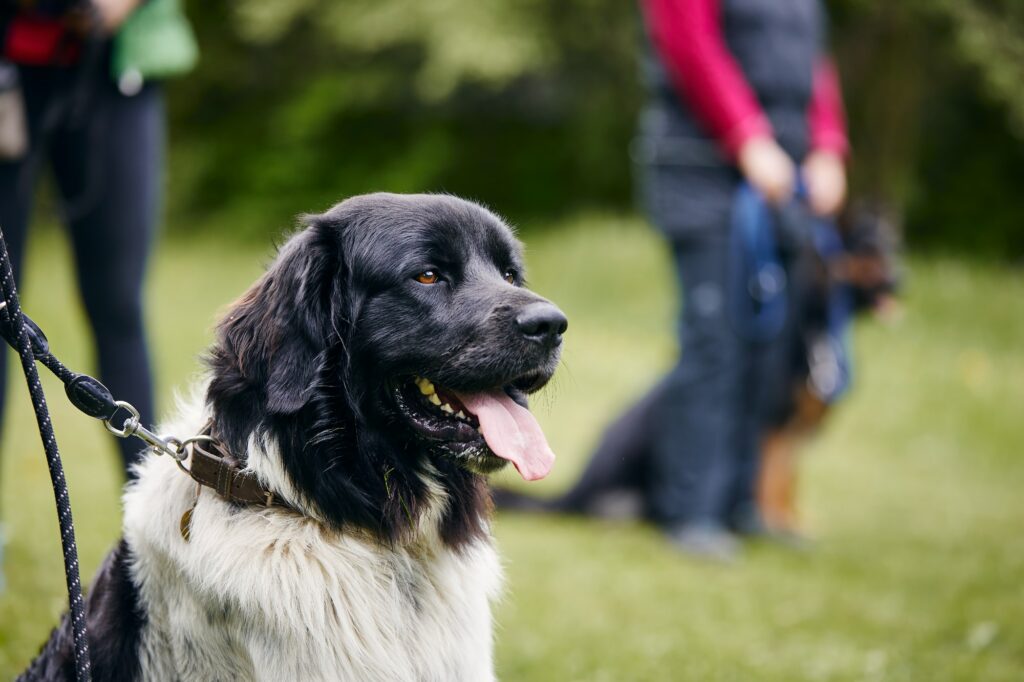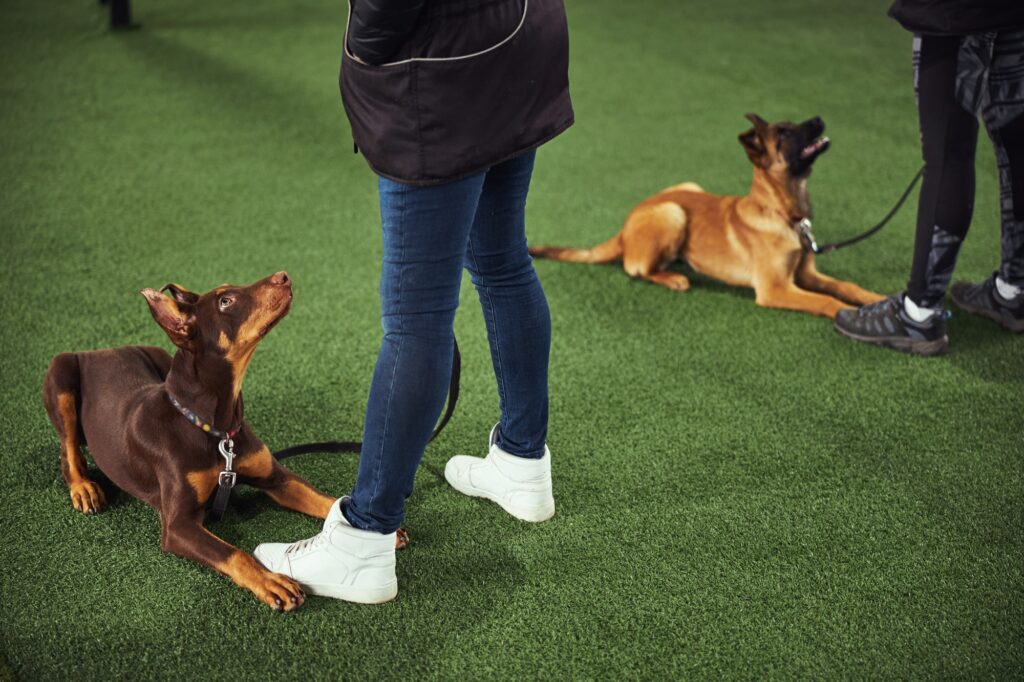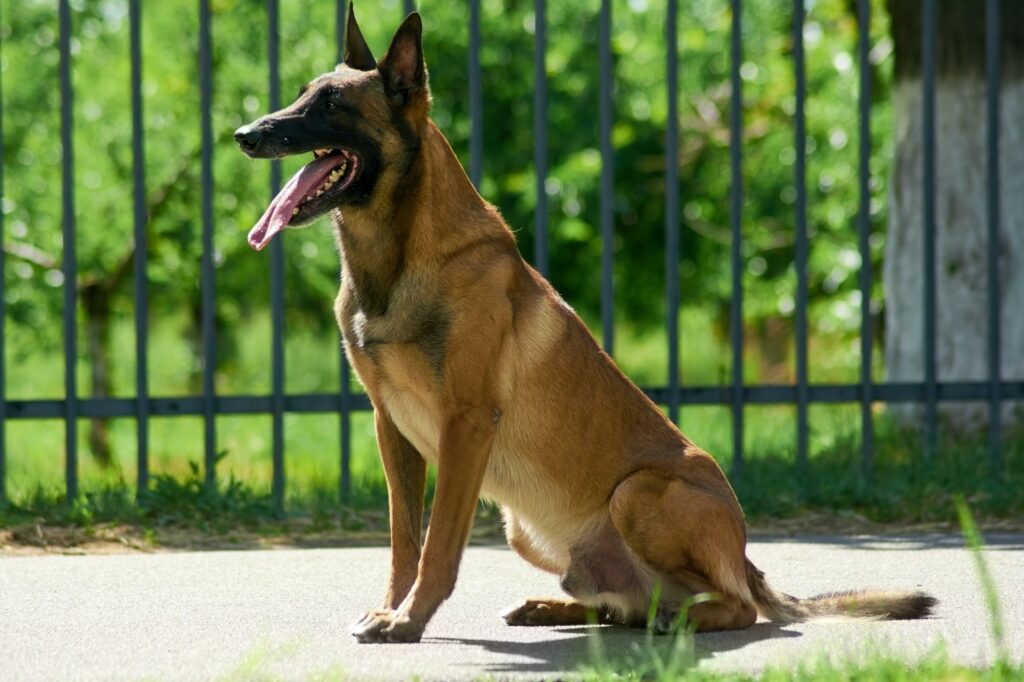You may have heard about the Canine Good Citizen (CGC) test if you’re a dog owner. This test is administered by the American Kennel Club (AKC), designed to measure your dog’s obedience and good manners. In this blog post, we will discuss the criteria required to take the CGC test and what you can expect if you decide to take it with your pup!
What is the Canine Good Citizen Test?
So what exactly is the Canine Good Citizen Test? Canine Good Citizen is a program that the American Kennel Club (AKC) developed in 1989 to reward dogs with good manners at home and in the community. The CGC test has become so popular that many dog obedience schools use it as part of their training curriculum!
In order to take this test, your dog must be at least one year old. The test has ten items that your dog must complete successfully to pass. But before you and your pup can take the Canine Good Citizen Test, you as an owner must sign the responsible dog owners pledge.
The Responsible Dog Owners Pledge
The Responsible Dog Owners Pledge is an extremely important part of the Canine Good Citizen Test because being a responsible dog owner is a vital part of the CGC concept. By taking this pledge, you agree to be responsible for your dog’s actions and behavior at all times.
You will also agree that you will train your pup in Canine Good Citizen skills and take him/her out into the community on a regular basis so he or she can practice those skills around people of all ages as well as other dogs.
What is Tested During The Canine Good Citizen Test?
Now it’s time to get into the nitty-gritty! The Canine Good Citizen (CGC) program is designed to reward dogs who have good manners at home and in the community. The Canine Good Citizen test has ten items, which your dog must complete successfully to pass! Let’s take a look at each of these items more in-depth!

Accepting a Friendly Stranger
The dog must allow a friendly stranger to approach it and talk to the handler in a typical, everyday scenario. The evaluator approaches the dog and handler and nicely greets the handler while ignoring the dog. The evaluator shakes hands with the handler and exchanges pleasantries with him. There should be no indication of resentment or fear on the dog’s part as it stands quietly while being ignored by this person.
Sitting Politely for Petting
The dog must allow a friendly stranger to pet it while it is out with its handler and remains calm and sitting! The evaluator pets the dog on the head or body if they ask permission first. The dog may stand up during this step if it wishes but must remain calm and polite when its handler asks the evaluator to stop petting them!
Appearance and Grooming
The Canine Good Citizen test also checks a dog’s appearance. It is important that your pup looks well-groomed and healthy. The evaluator will look for things such as clean fur, proper grooming, good weight, etc.
Walking on a Loose Leash
The dog must walk calmly beside its handler on a loose leash. This means that the dog cannot pull or strain the leash while walking. If it does so, it will fail the Canine Good Citizen test!
Walking Through a Crowd
The Canine Good Citizen evaluation tests how well your dog does in crowds of people. This part of the test requires you and your dog to walk through a group of people that are quietly standing by on either side without stopping or showing signs of distraction.

Sit & Stay on Command
The dog must remain in a sit or down position until its handler tells it to get up. The evaluator will ask the handler to leave their dog for a brief period (usually about three minutes). During this time, the evaluator will move away from the dog and observe how it behaves.
Come When Called
The Canine Good Citizen test also tests a dog’s responsiveness to its handler’s commands. The evaluator will call the dog by name and ask it to come to them. If the dog doesn’t respond or comes but is not under control, it will fail the Canine Good Citizen test.
Reaction to Another Dog
The next test determines how your dog reacts when approached by another dog. The evaluator will walk towards you with a friendly, controlled, and leashed dog on their side of the street. They will cross in front of your pet so that both dogs face one another at least ten feet apart without lunging, growling, or barking at each other. Both you and the evaluator will continue walking in opposite directions while keeping an eye on your dog’s behavior!
Reaction to Distraction
The Canine Good Citizen test also checks a dog’s reaction to distractions. The evaluator will drop a chair on the ground with a loud noise or have someone run past you at a distance of about 15 feet away from your pet. The evaluator will see how well your dog can stay calm and focused on them despite these distractions by looking for any signs that it is unruly or fearful during this time period.

Supervised Separation
The final section of the Canine Good Citizen test determines how well your dog behaves when it is left alone. The evaluator will ask you to leave your dog in a room by itself for about three minutes. During this time, the evaluator will observe how the dog behaves without human interaction. It should not bark, whine, or destroy any objects in the room that are left for it to play with during this time period!
Other Things to Know About the Canine Good Citizen Test
The Canine Good Citizen test can be taken by any dog, no matter what breed it is. It doesn’t even need to have been registered with the AKC before taking this exam; all dogs from all backgrounds are welcome!
So, if you’re thinking about taking the Canine Good Citizen test with your dog, be sure to brush up on all of the criteria mentioned above. It’s important that your dog knows how to behave in various situations so that it can be a well-mannered member of society.
During the month of March, our team at Wounded Paw Project will be hosting training seminars to help get you and your pup ready for the Canine Good Citizen Test! So keep a lookout on our social media for more information about those upcoming dates.
